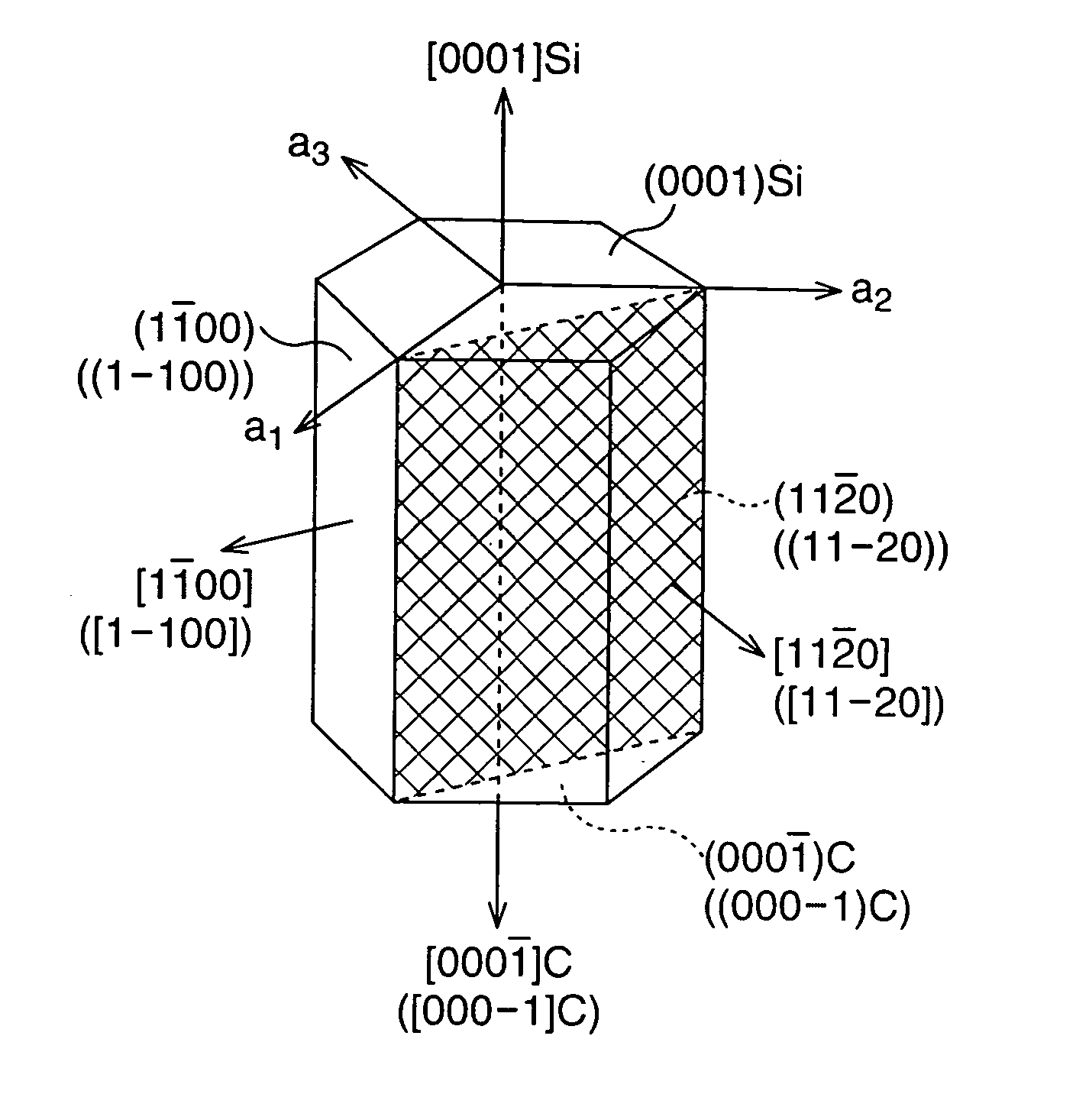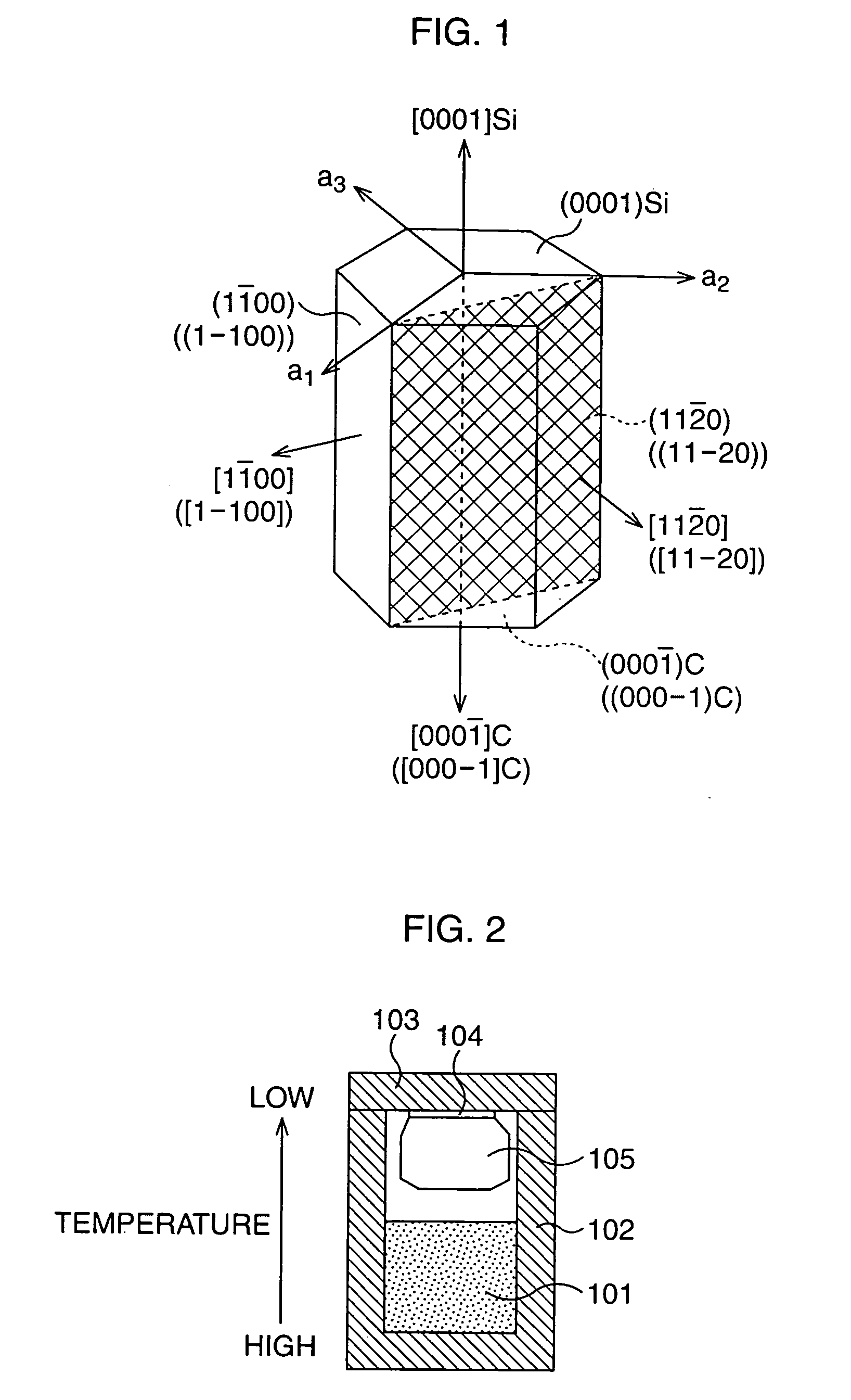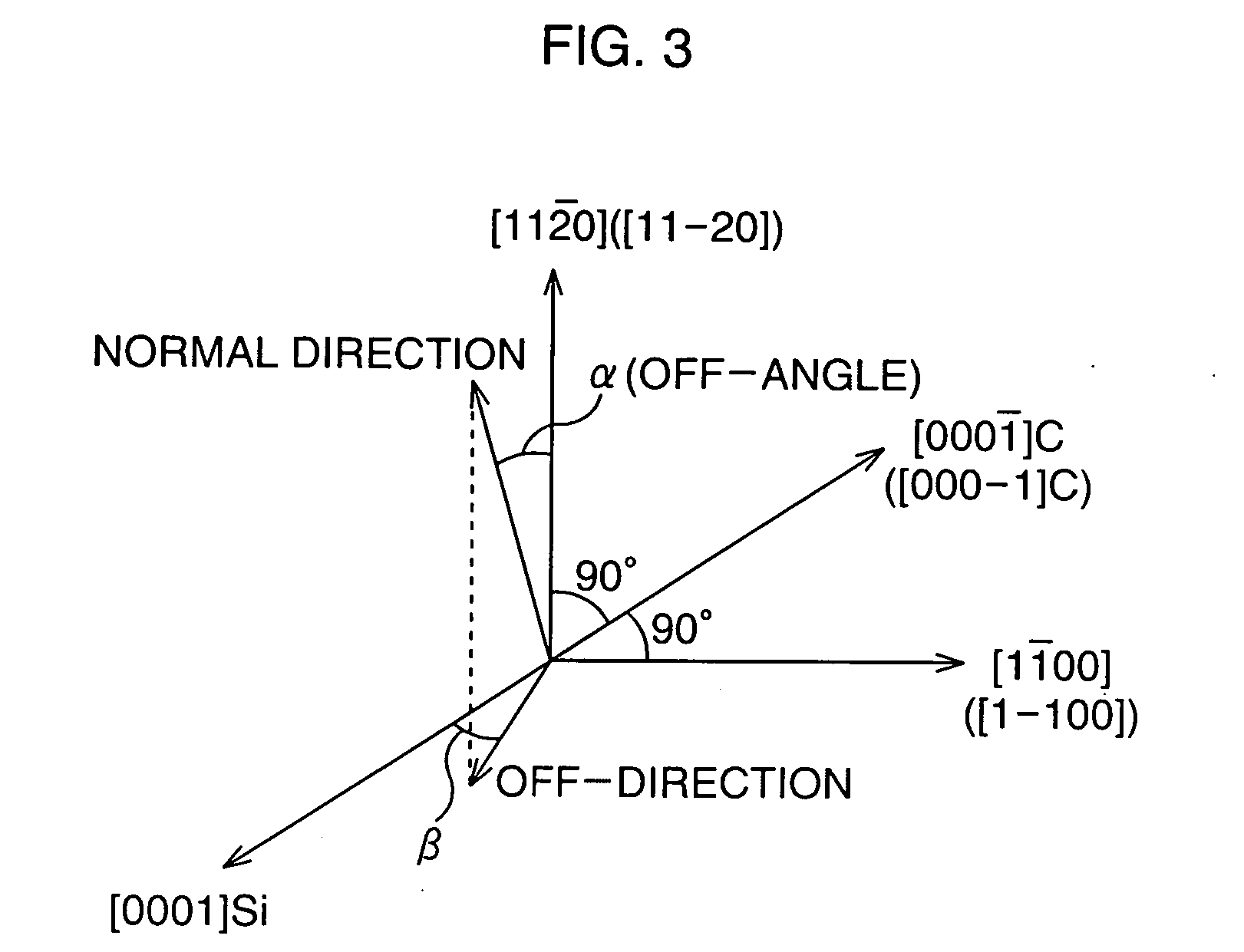Seed crystal of silicon carbide single crystal and method for producing ingot using same
a technology of seed crystal, which is applied in the direction of crystal growth process, polycrystalline material growth, and polycrystalline material growth, can solve the problems of inability to stably and stably supply a large size and high-quality silicon carbide single crystal in an industrial scale, and the practical application of this material has been hindered, so as to achieve less defects
- Summary
- Abstract
- Description
- Claims
- Application Information
AI Technical Summary
Benefits of technology
Problems solved by technology
Method used
Image
Examples
first embodiment
[0086] Silicon carbide single crystal was produced using a crystal growth system shown in FIG. 6. Specifically, a wafer was cut from a 6H-type silicon carbide single crystal which had grown in the [000-1] C direction. At this time, a silicon carbide single crystal which included micropipe defects but no stacking fault was used. Regarding the cut face, a face inclined at an angle of 10 degrees to the [0001] Si direction with respect to the (11-20) face of the silicon carbide single crystal was taken as the cut face (α=10°, β=0°). Incidentally, the deviation of the off-direction from the [0001] Si direction was set to be within ±1°.
[0087] And, a silicon carbide seed crystal 1 was obtained by mirror-like polishing the cut wafer. The diameter measured at this time was 20 mm at the smallest.
[0088] Thereafter, the seed crystal 1 was fixed on the inside surface of a lid 4 of a graphite crucible 3. A raw material 2 was placed in the graphite crucible 3. Then, the graphite crucible 3 fille...
second embodiment
[0096] Using a crystal growth system shown in FIG. 6, a silicon carbide single crystal was produced. Specifically, first, a wafer was cut from a 4H-type silicon carbide single crystal which had grown in the [000-1] C direction. At this time, a silicon carbide single crystal which included micropipe but no stacking faults was used. Regarding the cut face, a face inclined at an angle of 10 degrees with respect to the (11-20) face of the silicon carbide single crystal to the [000-1] C direction was taken as the cut face (α=10°, β=180°). Incidentally, the deviation of the off-direction from the [000-1] C direction was set to be within ±1°.
[0097] Then, a silicon carbide seed crystal was obtained by mirror-like polishing the cut wafer. The diameter measured at this time was 20 mm at the smallest.
[0098] Thereafter, the crystal was allowed to grow similarly to the first embodiment. As a result, the diameter of the obtained crystal was 22 mm and the height was about 16 mm.
[0099] By analyz...
third embodiment
[0104] Using the crystal growth system shown in FIG. 6, a silicon carbide single crystal was produced. Specifically, first, a wafer was cut from a 4H-type silicon carbide single crystal which had grown in the [000-1] C direction. At this time, the silicon carbide single crystal in which micropipe defects were contained but no stacking faults existed was used. Regarding the cut face, a face inclined at an angle of 10 degrees with respect to the (11-20) face of the silicon carbide single crystal in the [0001] Si direction was taken as the cut face (α=10°, β=0°). Incidentally, the deviation of the off-direction from the [000-1]Si direction was set to be within ±1°.
[0105] Then, a silicon carbide seed crystal was obtained by mirror-like polishing the cut wafer. The diameter measured at this time was 20 mm at the smallest.
[0106] Thereafter, the crystal was allowed to grow similarly to the first embodiment. However, the growth rate was set to 0.75 mm / sec. As a result, the diameter of the...
PUM
| Property | Measurement | Unit |
|---|---|---|
| angle | aaaaa | aaaaa |
| angle | aaaaa | aaaaa |
| angle | aaaaa | aaaaa |
Abstract
Description
Claims
Application Information
 Login to View More
Login to View More - R&D
- Intellectual Property
- Life Sciences
- Materials
- Tech Scout
- Unparalleled Data Quality
- Higher Quality Content
- 60% Fewer Hallucinations
Browse by: Latest US Patents, China's latest patents, Technical Efficacy Thesaurus, Application Domain, Technology Topic, Popular Technical Reports.
© 2025 PatSnap. All rights reserved.Legal|Privacy policy|Modern Slavery Act Transparency Statement|Sitemap|About US| Contact US: help@patsnap.com



